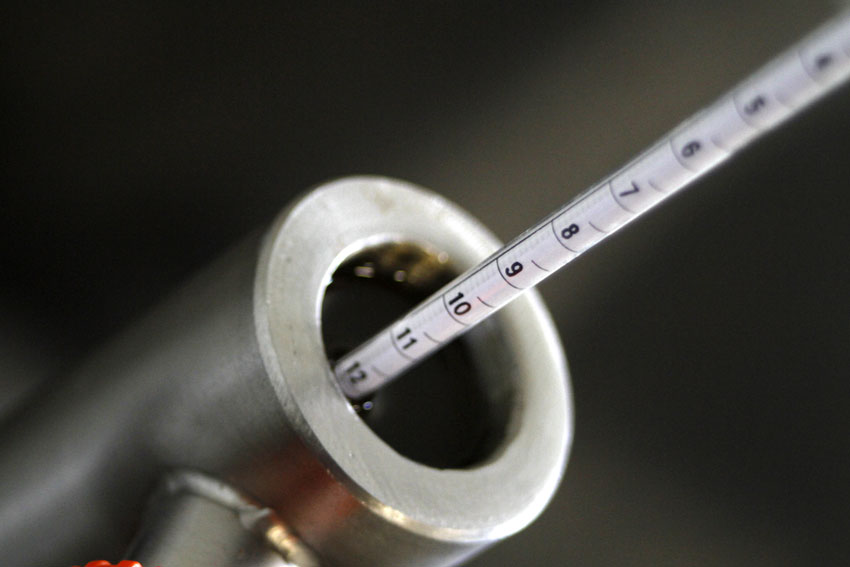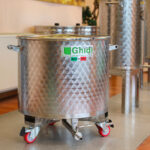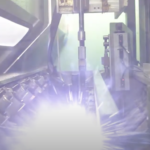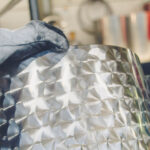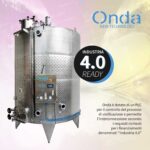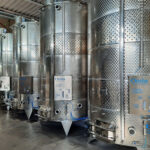Beer fermenters
temperature controlled
Fabio Massellucci, the brewmaster of 26 Nero Brewery, tells us about it.
In the brewing process, fermentation is when the magic happens, when simple wort is transformed into beer thanks to those microorganisms called yeasts.
Yeasts are inoculated within the wort, then follow, the phase of their replication, and that of fermentation.
In the fermentation phase, which begins after a few hours, the yeasts begin to feed on the sugars, transforming them into ethyl alcohol, carbon dioxide, and other secondary compounds, resulting from their anaerobic respiration, which contribute to the aromatic characteristics of the beer (esters, higher alcohols, organic acids) .
The yeast used in fermentation therefore is a very important ingredient that defines, in addition to flavor and aroma, the style of beer we are brewing.
Yeasts fall into two broad categories:
- Yeasts that are activated at high temperatures that initiate fermentation at temperatures ranging from 15°C to 25°C. They are used in the production of top-fermented beer.
- Low-temperature active yeasts that begin fermentation at temperatures ranging from 5°C to 12°C. Characterizing low-fermentation beer production.
So the yeast works in different ways depending on the temperature influencing the secondary elements (esters, higher alcohols, organic acids) that contribute to the aromatic characteristics of the beer.
So type of yeast and fermentation temperature are two indispensable elements.
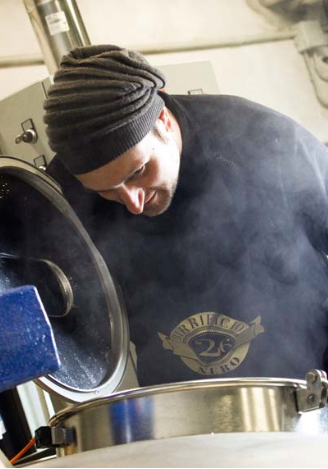 If fermentation takes place at UNCONTROLLED temperature, what happens?
If fermentation takes place at UNCONTROLLED temperature, what happens?
“The yeast will work wildly, so the brewer will not be able to get the same product that the customer is used to drinking, because depending on the fermentation temperature, the yeast will produce different types of scents, aromas, waste substances, etc. etc.”
From 1 to 10 how important is it to have temperature-controlled tanks
“Definitely 10. Because fermentation is the fundamental process in creating beer, and what a good brewer needs to know how to do, in order to sell, is replication of the beer in taste, aroma, color, etc.”
Have you always had temperature-controlled tanks?
“No. Before I opened I had a 100-liter system and tanks without temperature control, the room where the tanks were placed was equipped with an air conditioner, but I still couldn’t control the temperature inside the fermenters and therefore, in addition to not always getting the usual result in terms of taste, aroma, etc., I happened to throw away entire brews.”
Are flat bottom or conical bottom tanks preferable?
“Definitely conical bottom. Although the initial cost is slightly higher, it is a medium- to long-term investment; doing a quick calculation, the cost of discarded beer to avoid bottling the waste residue amounts in less than a year to the price difference between a conical and a flat bottom tank.”
Advice for those who want to open a new brewery?
“Definitely don’t skimp on fermenters and that’s where it all happens…. and good luck!”
Discover our catalog of stainless steel fermenters and tanks for beer:
[yasr_overall_rating]

